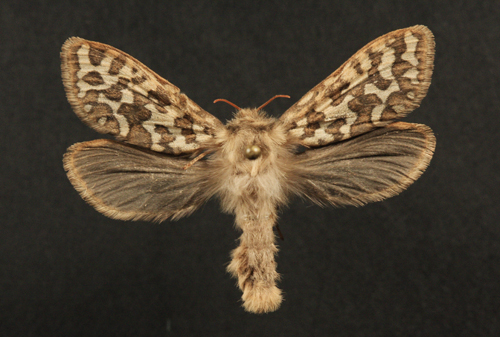Welcome to the new year, and nearly a full year of blogging! It’s amazing how fast the time flew by, but again it always does. As you likely noticed December turned out to be my weakest posting month with a whopping 2 posts. Resolution: more posting!
Now I haven’t started blogging about music (for those who get the Wilco reference), but I am taking us back to the ghost moth of previous posts.
Progress has been made and unfortunately it is pointing toward a direction I was not particularly hoping for. As it turns out my moth may not be new after all! I finally managed to track down two specimens of a species known from the same general vicinity as my specimen above. Gazoryctra lemberti is known from the central Sierra Nevada near Yosemite but has been so rarely collected I can only find 5 specimens known to science in the literature. Two additional specimens are housed at the Field Museum in Chicago (which was totally unknown to me, and nearly knocked me off my feet when I found them during a random drawer sweep!). When I saw this moth I knew what I was seeing – my moth from the Sierra!
The two Field Museum specimens are rather special in that they date from the collection of Harrison G. Dyar, 1894. (Read more about this crazy eccentric lepidopterist over on an old Bug Girl post). On the data label was a small tag indicating a publication: I looked it up – G. lemberti OD (.pdf).
Hummm that’s a pretty good coincidence, 2 specimens collected at this exact locality on the exact year… počakajte, these are probably the original type series! What are the chances that a moth known from 5 specimens would have druga two specimens from the same date in another collection? More work to do, but it’s always nice to find a “lost” type.
But what this means is that the bug above is most likely Gazoryctra lemberti, and not a new species after all. Glad I didn’t start too much work on this…


Very interesting connection with the Field Museum specimens. If the data match the original publication as collected by Lambert – then it seems you have found the original type series. If this is fairly certain, they all you need to do is designate a lectotype. If there is a question about whether the Field Museum specimens were the original types series, then pick one of them to serve as a Neotype.
The data matches to “Lyell fork of the Tuolumne River”. I’ve asked Alma at the Smithsonian to check on their “type” of this species, but there is only one specimen and no data given online.
The FMNH specimens have more precise data that is dated to “1894”, but there is no specific date – just a hand written tag “11077” and 11091″. Since there are only a handful of specimens known, it would be uncanny that two other specimens were collected at this location in 1894 yet somehow evaded the publication.
Still exciting to have such a rare specimen! Was it in one of your light traps?